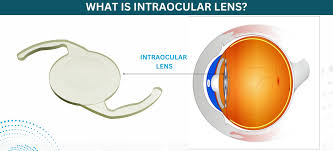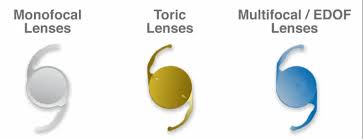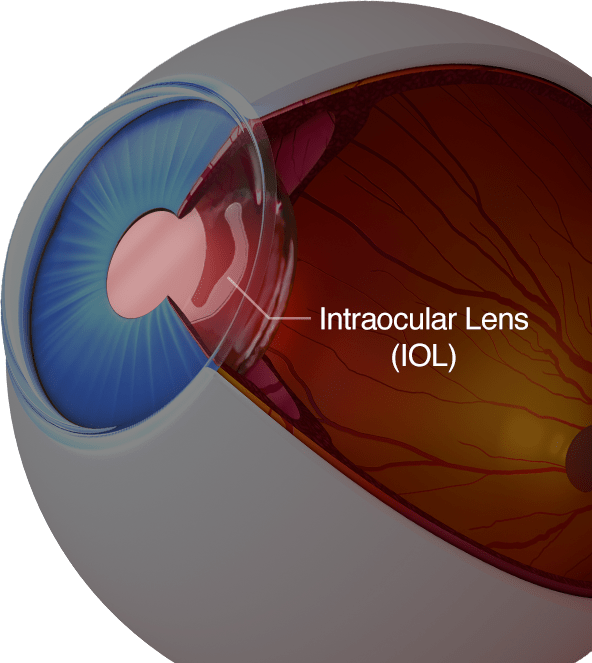Introduction to IOLs
Intraocular lenses (IOLs) are a critical component of modern cataract surgery, serving as artificial lenses that replace the eye’s natural lens. The lens in the human eye is responsible for focusing light onto the retina, allowing us to see clearly. When the natural lens becomes clouded due to cataracts, vision deteriorates. Cataract surgery removes the cloudy lens and replaces it with an IOL, restoring vision.
IOLs are also used for refractive vision correction purposes, such as correcting nearsightedness, farsightedness, or astigmatism. IOL technology has advanced significantly over the years, offering a variety of options designed to meet individual needs. As with any medical procedure, the cost of IOLs can vary depending on various factors, including the type of lens, surgical expertise, and geographical location.
This guide will help you understand the costs associated with IOLs, factors influencing pricing, and how to choose the right IOL for your needs and budget.
What are Intraocular Lenses (IOLs)?
Surgeons implant an intraocular lens (IOL) to replace the natural lens during cataract surgery or correct refractive errors. They use biocompatible materials like silicone, acrylic, or hydrogel to create IOLs that support clear vision.
Surgeons perform cataract surgery to remove the clouded natural lens and replace it with an IOL. There are various types of IOLs, each with different functionalities and price points. Some IOLs aim to correct only one type of refractive error, while others can address multiple issues simultaneously.
Importance of IOLs in Vision Correction
IOLs are essential for restoring vision lost to cataracts, which are one of the leading causes of blindness worldwide. They can also correct refractive errors, allowing patients to achieve improved vision without the need for glasses or contact lenses after surgery. IOLs offer a permanent, long-lasting solution to vision problems and are a critical aspect of modern ophthalmic care.

Types of IOLs and Their Costs
The cost of IOLs varies depending on the type of lens chosen. Here is an overview of the most common IOL options available today, along with their general price ranges.
Monofocal IOLs
Monofocal IOLs are the most basic and affordable type of intraocular lens. These lenses are designed to provide clear vision at a single focal point, usually for distance vision. Patients who choose monofocal IOLs often require reading glasses or bifocals after surgery for near vision.
Cost:
Typically, the cost of monofocal IOLs ranges from $1,000 to $2,500 per eye. The overall cost of the surgery will depend on factors like location and surgeon expertise.
Multifocal IOLs
Multifocal IOLs provide patients with improved vision at multiple distances (near, intermediate, and far). These lenses are designed to reduce the need for glasses or contact lenses by offering a broader focal range. They are an excellent choice for individuals seeking independence from corrective eyewear after cataract surgery.
Cost:
The cost of multifocal IOLs is higher due to the advanced technology. Prices typically range from $2,500 to $4,500 per eye, depending on the brand and surgical center.
Toric IOLs
Surgeons use toric IOLs to correct astigmatism, a refractive error caused by an irregularly shaped cornea. These lenses have a cylindrical shape that helps to improve focus and reduce distortion. Toric IOLs can be combined with monofocal or multifocal lenses to correct astigmatism and other vision problems.
Cost:
Toric IOLs generally cost between $2,000 and $3,500 per eye. They are often priced higher than monofocal IOLs but are a necessary solution for patients with astigmatism.
Accommodative IOLs
Accommodative IOLs are designed to shift position within the eye to provide improved near and distance vision. These lenses move in response to the eye’s natural focusing mechanism, which can help reduce or eliminate the need for reading glasses. “Surgeons recommend accommodative IOLs for patients with presbyopia, an age-related difficulty focusing on close objects.”
Cost:
The cost for accommodative IOLs typically ranges from $2,500 to $4,000 per eye.
Extended Depth-of-Focus (EDOF) IOLs
Extended Depth-of-Focus (EDOF) IOLs are designed to provide a continuous range of vision, particularly for intermediate distances, such as reading a computer screen or driving. EDOF lenses provide better depth of focus and can improve vision at various distances, including near and far, while reducing the need for glasses.
Cost:
EDOF IOLs are generally priced between $3,000 and $4,500 per eye, depending on the type and technology involved.

Factors Influencing the Cost of IOLs
Several factors can affect the overall cost of IOLs. These include the type of lens selected, the technology and material used, the surgeon’s expertise, and the location of the surgery.
Type of Lens Selected
The type of IOL you choose is one of the most significant factors influencing the price. Multifocal, toric, and EDOF lenses tend to be more expensive than basic monofocal lenses due to the advanced technology and benefits they provide.
Technology and Material Used
IOLs are made from a variety of materials, including acrylic, silicone, and hydrogel. Premium materials that offer additional features such as UV protection, greater durability, and better light refraction can drive up the cost of the lens.
Surgeon’s Expertise
Surgeons with more experience and advanced skills in performing cataract surgeries or IOL implants may charge higher fees for their services. The surgeon’s reputation and the complexity of the surgery can also impact the overall cost.
Hospital or Clinic Location
The cost of surgery varies depending on where the procedure is performed. High-cost areas, such as urban centers with a higher cost of living, generally have more expensive surgeries. Conversely, medical facilities in smaller towns or countries with lower healthcare costs may offer more affordable IOL surgery.
Additional Tests and Procedures
Some patients may require additional diagnostic tests, such as corneal topography or measurements of the eye’s dimensions, to ensure the correct lens is selected. These additional costs can add to the overall expense of the surgery.
Cost Breakdown of IOL Surgery
Here is a typical cost breakdown for IOL surgery, including pre-surgery consultations, the surgery itself, and post-surgery follow-up care:
| Cost Item | Estimated Cost |
|---|---|
| Pre-surgery consultation & tests | $200 – $500 |
| Surgery charges | $1,000 – $4,500 per eye |
| Post-surgery medications & follow-ups | $100 – $300 |
| Total Estimated Cost (per eye) | $1,300 – $5,300 |
Note that these prices can vary depending on the type of IOL selected and other factors discussed above.
Comparison of IOL Costs in Different Countries
The cost of IOL surgery varies globally, with some countries offering significantly more affordable procedures due to lower medical and labor costs.
| Country | Monofocal IOL | Multifocal IOL | Toric IOL | Accommodative IOL | EDOF IOL |
|---|---|---|---|---|---|
| USA | $1,000 – $2,500 | $2,500 – $4,500 | $2,000 – $3,500 | $2,500 – $4,000 | $3,000 – $4,500 |
| UK | £1,000 – £2,000 | £2,000 – £3,500 | £1,500 – £3,000 | £2,000 – £3,500 | £2,500 – £4,000 |
| India | ₹50,000 – ₹1,50,000 | ₹1,50,000 – ₹3,50,000 | ₹1,00,000 – ₹2,50,000 | ₹1,50,000 – ₹3,00,000 | ₹2,00,000 – ₹4,00,000 |
| Thailand | ฿30,000 – ฿80,000 | ฿70,000 – ฿120,000 | ฿50,000 – ฿90,000 | ฿70,000 – ฿120,000 | ฿100,000 – ฿150,000 |
| Mexico | $1,000 – $2,000 | $2,000 – $3,500 | $1,500 – $3,000 | $2,000 – $3,500 | $2,500 – $4,000 |
As seen, countries like India and Mexico offer more affordable IOL options, which is why they are popular destinations for medical tourism.
Insurance Coverage and Financing Options for IOL Surgery
Does Insurance Cover IOL Costs?
“In many cases, insurance covers the cost of monofocal IOLs because they are medically necessary for cataract surgery. However, insurance usually does not cover premium lenses like multifocal or toric IOLs, as they are often considered elective. Verify coverage details with your insurance company.”
Financing Options and Payment Plans
Many surgery centers offer financing plans to help patients manage the costs of IOL surgery. These may include:
- Monthly payment plans: Patients can spread the cost over several months or years.
- Medical credit cards: Special financing options like CareCredit allow patients to pay for surgery in installments with low or no interest for a set period.
- Personal loans: Some patients opt to take out a personal loan to cover the costs of surgery.
How to Choose the Right IOL for Your Needs and Budget
Choosing the right IOL involves balancing your vision correction needs with your budget. It’s important to consider the following factors:
- Your lifestyle: Do you need clear near, intermediate, and distance vision, or would you be fine with just distance vision?
- Budget: Higher-end lenses like multifocal and EDOF IOLs provide greater convenience but come at a higher cost.
- Eye health: If you have astigmatism, a toric lens may be necessary.
- Long-term benefits: Premium lenses may have higher upfront costs but can save you money on glasses or contact lenses in the future.
Pros and Cons of High-End IOLs vs. Basic IOLs
| IOL Type | Pros | Cons |
|---|---|---|
| High-End IOLs | Better vision quality, reduced need for glasses, long-term cost savings | Higher upfront cost |
| Basic IOLs | Affordable, widely available, good for distance vision | May require glasses for near vision |
Success Rates and Patient Satisfaction with Different IOLs
Success rates for IOL surgery are generally high, with most patients experiencing significant improvements in vision. The satisfaction rate is particularly high for premium IOLs, as patients appreciate the enhanced quality of vision and reduced reliance on glasses. However, some patients may experience visual disturbances such as glare or halos, especially with multifocal lenses.
Latest Innovations in IOL Technology and Their Cost Implications
Innovations such as the development of trifocal IOLs, which provide vision at three focal points (near, intermediate, and far), and smart IOLs that can adapt to changes in focus, are on the horizon. These advancements will likely come with higher costs due to the advanced technology involved.
Cost-Effective Alternatives to Premium IOLs
For patients who want to reduce costs but still achieve good vision, standard monofocal IOLs are an excellent choice. Although they may require the use of reading glasses, they offer a cost-effective solution for those who prioritize affordability over convenience.
Tips to Reduce IOL Surgery Expenses Without Compromising Quality
- Consider medical tourism: Countries with lower healthcare costs, such as India or Mexico, offer high-quality IOL surgery at a fraction of the price.
- Use insurance: Check if your insurance plan covers basic IOLs, and consider financing options for premium lenses.
- Shop around: Compare costs across different clinics and surgeons to find the best value.
Conclusion
Intraocular lenses (IOLs) offer a range of options for individuals seeking vision correction following cataract surgery or to address refractive errors. The cost of IOLs depends on factors such as lens type, technology, and geographical location. Understanding the cost breakdown, as well as the factors that influence pricing, will help you make an informed decision when choosing the right IOL for your needs and budget. By considering all available options and financing opportunities, you can ensure that you receive the best possible care at an affordable price.
Author Details:
Dr. Sushruth Appajigowda holds a prominent position as a Cornea, Cataract, Glaucoma, and LASIK Surgeon in Bangalore. He serves as the chief Cataract and Refractive surgeon at Vijaya Nethralaya Eye Hospital, Nagarbhavi Bangalore. Renowned as one of the finest LASIK surgeons nationwide, he brings with him over 12+ years of experience across multiple LASIK platforms, including ZEISS, ALCON, SCHWIND, AMO, and Bausch and Lomb. Having successfully conducted over 5000 LASIK procedures, Dr. Sushruth holds the title of a Certified Refractive Surgeon and a Fellow of the All India Collegium Of Ophthalmology. Furthermore, he stands as a distinguished speaker at various National and International Forums, using his expertise to guide you in selecting the most suitable procedure based on your health requirements.

http://vijayanethralaya.com/link-in-bio/
Frequently Asked Questions (FAQs) About IOL Costs
- How much do IOLs typically cost?
The cost of IOLs varies from $1,000 to $4,500 per eye depending on the type of lens and location.
2. Does insurance cover the cost of IOLs?
Most insurance plans cover the cost of monofocal IOLs but may not cover premium lenses like multifocal or toric IOLs.
3. Are there cheaper alternatives to premium IOLs?
Yes, basic monofocal IOLs are a more affordable option, though they may require glasses for near vision.












